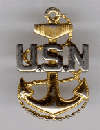From: Dictionary of American Fighting Ships
George Washington
George Washington was born 22 February 1732 in Westmoreland County, Va. He was commissioned in the Virginia Militia in 1753, rose to the rank of Lieutenant Colonel the next year, and fought brilliantly in the French and Indian War. Entering the Virginia House of Burgesses in 1759, Washington was an early advocate of independence. In 1775 he was appointed Commander in Chief of the Continental Army, and demonstrated a profound appreciation of sea power as well as great military genius. After years of hardship and arduous struggle, he finally won a decisive victory at Yorktown. In directing Allied movements during this campaign, one of the great strategic operations of our history, Washington brilliantly employed the French Navy to cut off Lord Cornwallis from help by sea. He had sought a decisive combined operation like this for years, for he wrote "In any operations, and under all circumstances a decisive Naval superiority is to be considered as a fundamental principle and the focus upon which every hope of success must ultimately depend."
The Treaty of Paris recognized American independence 20 January 1783. After attending the Annapolis Convention of 1786 and presiding over the Continental Convention of 1787, Washington was unanimously elected first President under the new Constitution and inaugurated 30 April 1789. His two terms in office laid the foundations for strong government under the Constitution. Returning to his home at Mount Vernon in 1797, Washington was recalled briefly to command the American army when war with France threatened in 1798. He died at Mount Vernon 14 December 1799.
~~~~~~~~~~~~~~~~~~~~~~~~~~~~~~~~~~~~~~~~~~~~~~~~~~~~
(SSB(N) - 598: dp. 5,600; l. 382'; b. 33'; dr. 29'; s. over 20 k.; cpl. 120; a. 16 Pol. mis.; cl. George Washington)
George Washington (SSB(N)-598) was originally Scorpion (SS(N)-589). She was lengthened by the insertion of a 130-foot missile section. Renamed George Washington, she was launched 9 June 1959 by the Electric Boat Division of General Dynamics Corp., Groton, Conn.; sponsored by Mrs. Robert B. Anderson; and commissioned 30 December 1959, Cdr. James B. Osborn (blue crew) and Cdr. John L. From, Jr., (gold crew) in command.
The first of a new class, George Washington sailed from Groton 28 June 1960 for Cape Canaveral, Fla., where she loaded two solid propellant Polaris missiles. Standing out into the Atlantic Missile Test Range with Rear Admiral W. F. Raborn, head of the phenomenal Polaris Submarine development program on board as an observer, the nuclear submarine made history 20 July 1960 when she successfully launched the first Polaris missile from a submerged submarine - the free world everywhere had gained a weapon of utmost importance to the protection of civilization. At 1239 George Washington's commanding officer sent President Eisenhower the historic message: "Polaris - from out of the deep to target. Perfect."Less than 2 hours later another missile from the submerged submarine homed in on the impact area 1,100 miles down range. A new and mighty weapon had been added to the vast power of the sea.
George Washington returned to Cape Canaveral to embark her gold crew, and 30 July 1960 duplicated her earlier successes by launching two more missiles while submerged. Shakedown for the gold crew ended at Groton 30 August and the submarine got underway from that port 28 October for Charleston, S.C., to load her full complement of 16 Polaris missiles. There she was awarded the Navy Unit Commendation, after which her blue crew took over; and George Washington embarked on her first patrol.
The submarine completed her first patrol after 66 days of submerged running 21 January 1961 and put in at New London, Conn. The gold crew took over; and she departed on her next patrol 14 February. After the patrol George Washington entered Holy Loch, Scotland, 25 April 1961. Through 1964 she continued to conduct classified deterrent patrols from that port, alternating her two crews. An incredible four years after her initial departure from Groton she put in to refuel, having cruised some 100,000 miles guarding the seas for America. Her powerful missiles are recognized everywhere as an important factor in the maintenance of peace and freedom throughout the world.
After overhaul and refueling at the Electric Boat Co. in Groton, George Washington resumed her patrols and once again was on the line in her role as a deterrent to war in European waters. She ended her 16th patrol at Holy Loch, Scotland, in August 1966 and departed on her 17th patrol late in September, continuing her proud record of service in the interest of peace and freedom.
https://www.history.navy.mil/research/histories/ship-histories/danfs/g/george-washington-iii.html
Larry’s Home Port
